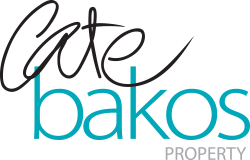 Buyers hate it. Agents do it. Advocates understand it, and some accept it. But how do we cope when our clients are STILL tempted to go to auction under the false hope that they actually have a chance of success when we know that their budget does not match the property value?
Buyers hate it. Agents do it. Advocates understand it, and some accept it. But how do we cope when our clients are STILL tempted to go to auction under the false hope that they actually have a chance of success when we know that their budget does not match the property value?
Recent comparable sales analysis, combined with a firm grasp of the strength of the market are absolutely necessary when auction underquoting is at play.
Auction under-quoting is rampant in Melbourne and we all generally anticipate it when auction properties come onto the market. Typically I will advise a buyer to apply a 15% addition to the base of the quoted range in order to glean a rough estimate of the true value. Obviously there is far more science applied when a property is properly appraised, but at a minimum – and definitely at first glance, a buyer should not anticipate that either the vendor’s reserve price OR the likely sale price are going to sit within the agent’s quoted range.
While fifteen percent is typical, in some cases I’ve witnessed 25-30%.
The key is to understand what other properties are available for sale at the same time, the current market sentiment, and the recently sold properties in the same area which have similar attributes. People have been lobbying against auction under-quoting for a long time now and some individuals have made a conscious decision to fight for the consumer and to fight hard. But the bottom line is that it still exists, it still happens, and we have to deal with it for now.
So this weekend I had some lovely clients who found a stunning property and felt compelled to compete at auction. I appraised it significantly higher than their budget, but no amount of science or pragmatism could dampen their hopeful spirits, so I conceded and we prepared for auction.
The property had been launched onto the market with a $700K+ campaign. Plus’s are annoying, but knowing that an agency is permitted to quote a ten percent range meant that their $700,000-$770,000 range REALLY meant something upwards of $800,000, I advised that energy spent on this property on their part would be spent in vain. Likewise, any money spent on the due-diligence would be wasted.
Shortly into the campaign, the quoted range was revised to $720K+ and later to $740K. Typically a price revision will reflect one of two things; an awareness of market conditions on the agent’s part highlighting a stronger result than anticipated, but more often than not, an offer or an ‘expression’ of an offer from a buyer which exceeds the quoted range.
So when my buyers asked me if they should invest in a building inspection report, I felt that on this occasion they were better off saving their money. I’d rather see my buyers invest in shoes than waste their money on a building inspection. It’s not always that easy however – and it hurts to see buyers spending their money on inspections in vain.
The property sold under the hammer today for $905,000. I saved my buyers some exciting shoe-money but still had to share in the disappointment for them.
So is it the responsibility of the agent to ensure that buyers don’t over-invest? Some will argue yes.
We feel that the responsibility is to be shared. Buyers need to be more educated about the market and the comparable sales within their market. But agents need to consider the less experienced, less-savvy buyers who spend a hard-earned $600 on an inspection they’ll never get to benefit from.
